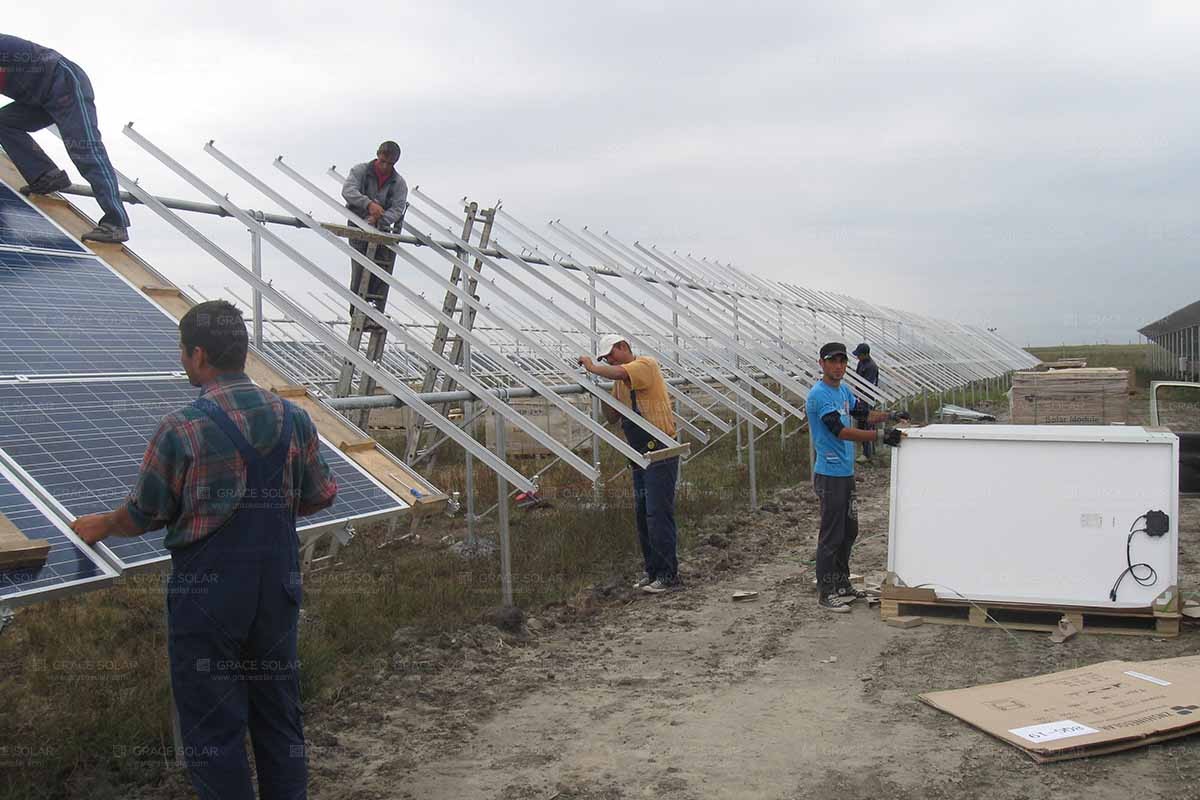Germany’s power mix boasts more renewables, lower spot market prices – despite nuclear exit
Germany’s shutdown of nuclear power plants in April did not result in a ramp-up of lignite-fired power plants, despite concerns. Instead, there has been a significant increase in the share of renewables in the electricity mix, and the proportion of coal-generated electricity has fallen by more than 20%.
 Electricity in Germany has become cheaper and cleaner since its last three nuclear power plants were shut down, according to new data from the Fraunhofer Institute for Solar Energy Systems ISE.
Electricity in Germany has become cheaper and cleaner since its last three nuclear power plants were shut down, according to new data from the Fraunhofer Institute for Solar Energy Systems ISE.
Net electricity production from lignite and hard coal has decreased by more than 20%, while natural gas has experienced a minor decline. In contrast, renewables have reached a record share of 57.7% of net electricity generation.
According to Fraunhofer ISE, the German energy system successfully managed the nuclear phase-out. The decommissioned reactors' reduced output was offset by lower consumption, decreased exports, and increased imports.
Before being taken off the grid, the nuclear facilities generated 6.7 TWh in April. From April to June, there was a 7 TWh gap compared to the same period the previous year. Overall, electricity load dropped by 16 TWh in the first half of the year to 234 TWh, while electricity production decreased from 252 TWh to 225 TWh.
The feared 7 TWh gap was not filled by electricity from lignite, as production from lignite-fired power plants dropped to 41 TWh in the first half of 2023, down from 52 TWh in the same period last year. Net electricity production from hard coal also decreased from 26 TWh to 20 TWh. However, the decline in gas was minimal, going from 24 TWh to 23 TWh.
In contrast, renewable generation remained steady, resulting in a relative share of 57.7% of net electricity generation in the first half of the year, compared to 51% in the previous year.
During this period, onshore and offshore wind turbines produced 67 TWh of green electricity, making them the largest energy source in the German electricity system. PV systems contributed 30 TWh, with only a slight decline of 0.6 TWh compared to the previous year. Notably, on May 4, photovoltaic generation set a record by surpassing 40 GW, and in June, wind power and photovoltaics combined generated a record 15 TWh of electricity.
According to Fraunhofer ISE, energy prices did not experience a shock but rather decreased. The volume-weighted average electricity price in the day-ahead auction was €100.54 ($190.56)/MWh, compared to €181.28/MWh in the same period last year and €53.42/MWh in 2021. The lower price is attributed to the cheaper natural gas, which currently averages €45.29/MWh, half the price compared to the first half of 2022, despite a €3 increase in the CO₂ price to €86.96 per ton.
For more information, please check solar mount website.

Net electricity production from lignite and hard coal has decreased by more than 20%, while natural gas has experienced a minor decline. In contrast, renewables have reached a record share of 57.7% of net electricity generation.
According to Fraunhofer ISE, the German energy system successfully managed the nuclear phase-out. The decommissioned reactors' reduced output was offset by lower consumption, decreased exports, and increased imports.
Before being taken off the grid, the nuclear facilities generated 6.7 TWh in April. From April to June, there was a 7 TWh gap compared to the same period the previous year. Overall, electricity load dropped by 16 TWh in the first half of the year to 234 TWh, while electricity production decreased from 252 TWh to 225 TWh.
The feared 7 TWh gap was not filled by electricity from lignite, as production from lignite-fired power plants dropped to 41 TWh in the first half of 2023, down from 52 TWh in the same period last year. Net electricity production from hard coal also decreased from 26 TWh to 20 TWh. However, the decline in gas was minimal, going from 24 TWh to 23 TWh.
In contrast, renewable generation remained steady, resulting in a relative share of 57.7% of net electricity generation in the first half of the year, compared to 51% in the previous year.
During this period, onshore and offshore wind turbines produced 67 TWh of green electricity, making them the largest energy source in the German electricity system. PV systems contributed 30 TWh, with only a slight decline of 0.6 TWh compared to the previous year. Notably, on May 4, photovoltaic generation set a record by surpassing 40 GW, and in June, wind power and photovoltaics combined generated a record 15 TWh of electricity.
According to Fraunhofer ISE, energy prices did not experience a shock but rather decreased. The volume-weighted average electricity price in the day-ahead auction was €100.54 ($190.56)/MWh, compared to €181.28/MWh in the same period last year and €53.42/MWh in 2021. The lower price is attributed to the cheaper natural gas, which currently averages €45.29/MWh, half the price compared to the first half of 2022, despite a €3 increase in the CO₂ price to €86.96 per ton.
For more information, please check solar mount website.



.jpg)